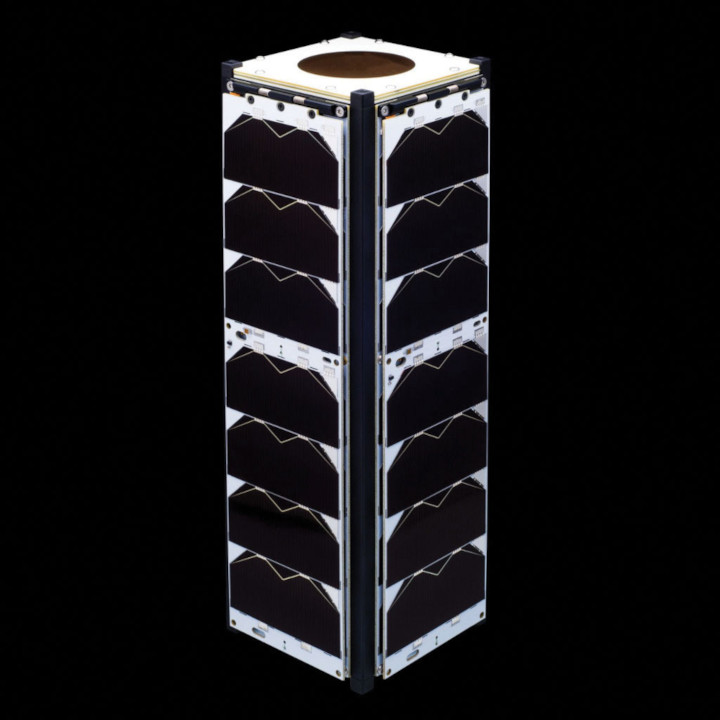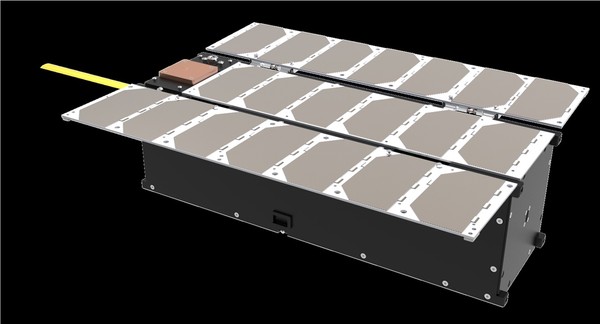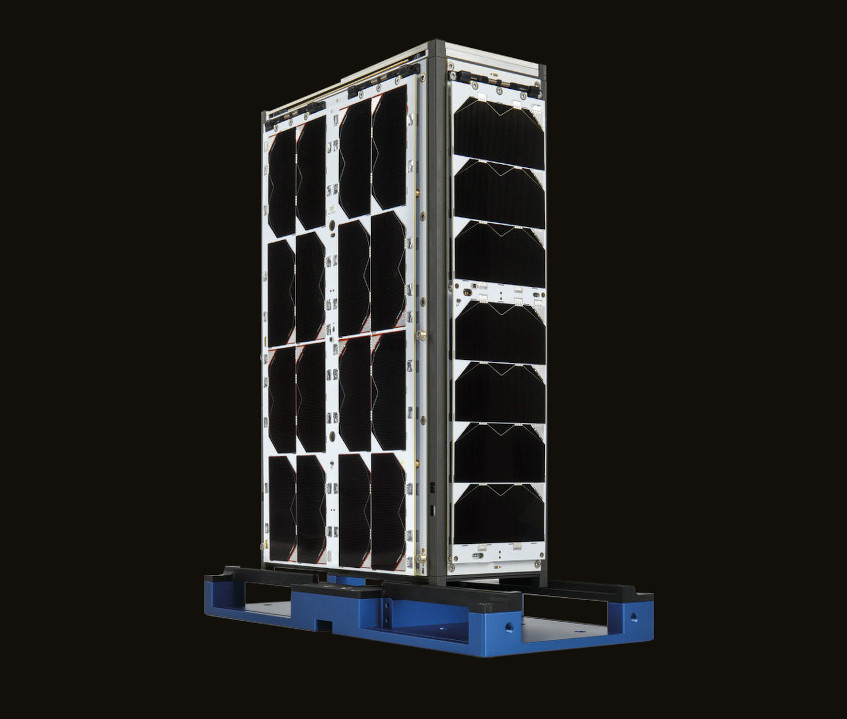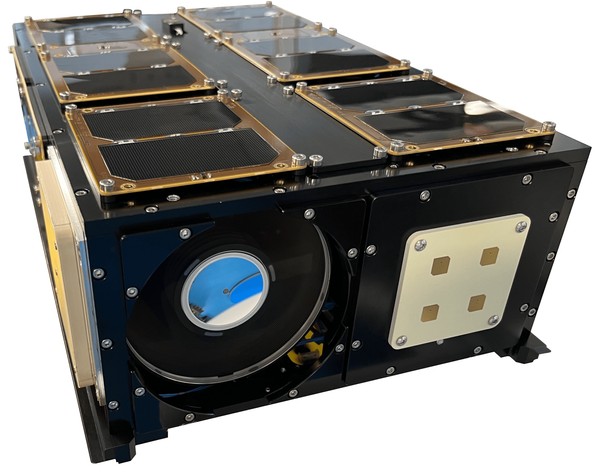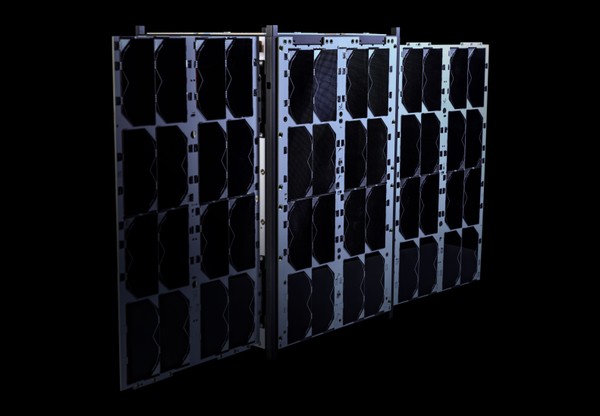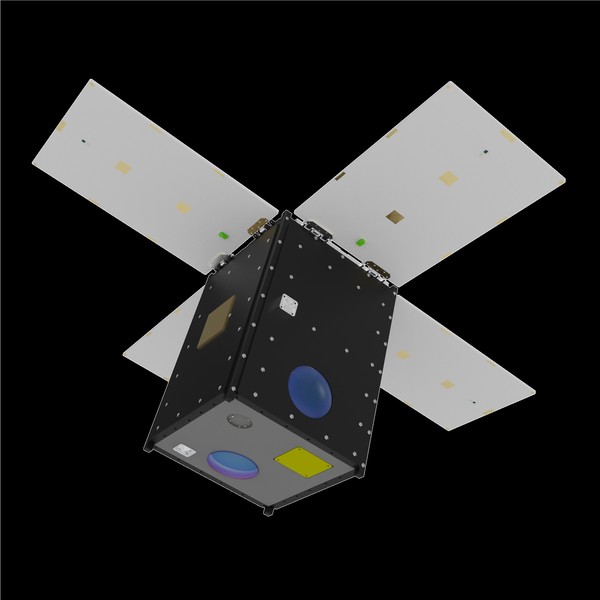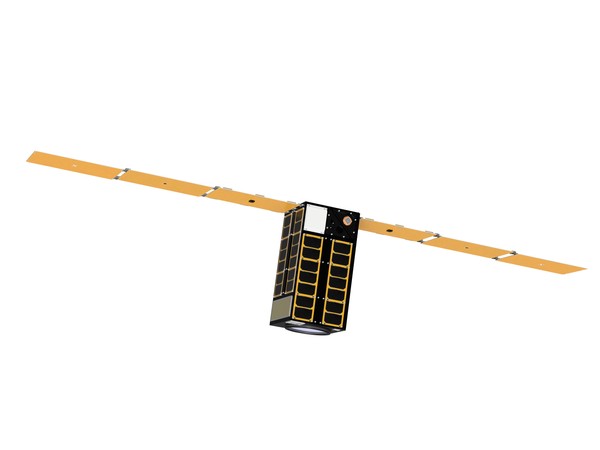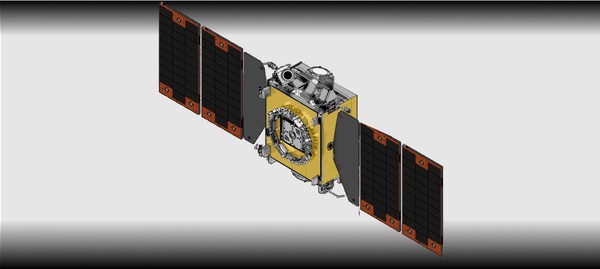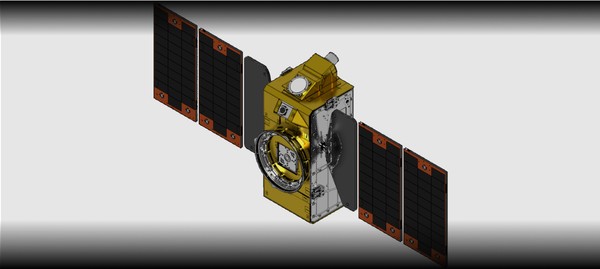CubeSat platforms and microsatellite buses are an increasingly viable option for many missions and services. In this article we take a look at what this technology entails and share details of a wide range of satellite platforms and suppliers available on the market today.
If you are familiar with the technology and would like to skip straight to see the product listings, the links below will take you to categories of platforms arranged by form factor.
Please note that this is a rapidly-evolving segment of the industry and we will be keeping this article up to date when new products come to market, or old ones are made obsolete.
Navigation
- Introduction to satellite platforms
- Advice on choosing a satellite platform
- 0.5U-3U CubeSat platforms
- 6U CubeSat platforms
- 8U-12U CubeSat platforms
- 16U+ CubeSat platforms
- Various/other size CubeSat platforms
- Microsatellite platforms
Introduction to satellite platforms
Satellite buses and platforms are essentially readymade systems for transporting and operating primary payloads in orbit. They typically feature a set of subsystems, power resources, connections and structural architecture to perform the basic functions of a satellite, once the primary payload and supporting systems are integrated.
The terms “satellite bus” and “satellite platform” are often used interchangeably. Traditionally, the term “bus” was often used to refer to the part of the spacecraft which actually enabled the payload.
The term “platform” seems to have come more into common nomenclature to describe the handling of the payload integration, involving manufacturers in more of the overall mission. In practice you’ll see both terms used to refer to the same system.
A mission designer looking to launch a new satellite might consider utilizing pre-designed platforms or buses in order to accelerate development. With such a system there is usually no need to acquire, integrate, and calibrate the basic architecture of a satellite, which enables engineers to focus on higher level goals, such as refining the mission plans or improving the proprietary payloads.
In recent years the number of successful CubeSat and microsat missions has provided flight heritage for an array of subsystems and components for manufacturers across the world. This has enabled several manufacturers to bring new, flight-proven manufacturers to the market, giving engineers more choices; driving down costs and increasing performance levels.
However, the greater diversity in the market also means that engineers need to weigh up a lot more factors to determine the best fit for their needs. We take a look at some of these in the next section.
Advice on choosing a satellite platform
The selection of a satellite platform is one of the most fundamental hardware choices in a space mission. It dictates the overall Size, Weight, and Power (SWaP) budget range available for the rest of the setup and has knock-on effects on all other aspects of the mission design.
Here are some of the key criteria to weight up when selecting a microsatellite or CubeSat platform:
Do-it-yourself (DIY) vs. pre-designed bus – firstly you need to determine whether a platform is actually right for your mission. The alternative is to build and/or purchase all of the elements present in a bus and then integrate and test these yourself.
There are many factors at play when making this choice. For example, if your goal is to build engineering capacity at your organization, a pre-built platform might not be for you. On the other hand, as is the case with many new space-based services; if your aims are to achieve a certain level of performance and reliability, and you’re agnostic to the technology that achieves it, a pre-qualified bus could be the best choice for you.
Form factor – the physical dimensions of the satellite is a very important consideration and will define the limitations on many of the subsystems you are able to use. The most important part of this decision is to again consider the service or performance levels that you wish to achieve and the mission plan that will be developed to do so.
Making decisions based on what your intended outcomes are, including the expected return on investment (RoI) for the mission, is going to determine what size of satellite should be used. There are many aspects of this decision, from primary payload dimensions to financial budget, but the important thing is to accurately assess the range of satellite platform form factors on the market to make the best choice for your mission goals.
Launch and deployment options – in the last 10 years microsat and CubeSat options have had a major impact on the market. The options for launching and deploying a nanosat or microsat are now well-developed, and shouldn’t be a major issue for professional missions.
Cost and availability will always be an issue, however, this is more of a mission planning consideration rather than a significant determining factor for the size or structure of the platform you may use.
Supplier restrictions and standards – as with any mission choice your platform decision also needs to take into account any limitations you (or your collaborators) may have on importing from certain countries and territories.
In addition, if your technology has military or other sensitive applications and/or requires particular enabling subsystems that need to adhere to certain standards or regulations, this might dictate which platforms on the market are available for you to use.
Supplier heritage and fit – finally, alongside the technical considerations and data analysis that needs to be carried out in order to pick the right platform, you also need to consider the expertise of the team you’ll be working with.
A satellite platform is a complex piece of equipment that will usually require a lot of collaboration with the manufacturer. You need to make sure that team you’ll be working with are experienced and flexible enough to meet your needs.
This doesn’t mean you shouldn’t consider platforms with little or no flight heritage, as it might be possible to negotiate more favourable contract terms in these cases. You may be able to develop closer working partnerships with newer teams as you will be taking on more risk. On the other hand, you might decide that well-established suppliers, with products that have significant operational heritage, are a safer bet.
Ensure that you try to assess how well you would work with the supplier in your project as part of the procurement process.
In the following sections we share details of a variety of commercially-available microsatellite and CubeSat platforms on the space market, organized by form factor.
0.5U-3U CubeSat platforms
Smaller form factor CubeSats have some obvious limitations on primary payload size, volume budget for supporting subsystems, and mission plans. However, recent advances in miniaturization across the industry means that it is possible to develop relatively powerful and advanced satellites in volumes of 3U or less.
0.5U CubeSat platforms
The Dhruva Space CUBESAT P-DoT is a CubeSat platform designed for space applications. It is a scalable 0.5U Platform designed to enable small satellite technology demonstrations as well as low-power M2M and IoT missions. The platform is optimized for Low Earth Orbit (LEO) missions and consists of a UHF transceiver.
1U CubeSat platforms
The EnduroSat 1U Platform is a CubeSat platform with ability to support 450g of commercial and scientific payloads. The fully integrated nanosatellite is available with EnduroSat Attitude Determination and Control System (ADCS) and complete payload integration support.
The Serenum Space V-Bus 1U is a flight proven 1U platform designed for space applications. It is a subsystems compatible with CubeSat standards. V-Bus is mainly suitable for earth observation, IoT and communication services, and educational and science experiment missions. The platform is available for CubeSat class between 1U and 3U.
1.5U CubeSat platforms
The EnduroSat 1.5U Platform is a CubeSat platform with ability to support 1U form factor of commercial and scientific payloads. The fully integrated nanosatellite is available with EnduroSat Attitude Determination and Control System (ADCS) and complete payload integration support.
2U CubeSat platforms
The Serenum Space V-Bus 2U is a flight proven 2U platform designed for space applications. It is a subsystems compatible with CubeSat standards. V-Bus is mainly suitable for earth observation, IoT and communication services, and educational and science experiment missions. The platform is available for CubeSat class between 1U and 3U.
3U CubeSat platforms
The EnduroSat 3U platform is a CubeSat Bus suitable of supporting up to 1.5U (1.5 kg) payloads of nanosatellite with integrated Attitude Determination and Control System (ADCS) and payload integration support.
The EXA KRATOS 3U Spacecraft bus is designed for CubeSat missions. The bus is completely configurable: From a compact spacecraft core with a 2.5U space for large payloads, to a powerhouse containing up to 350W of power, and LASER communications at 10Mbps.
The Exobotics XO-BUS 3U is a nanosatellite / CubeSat platform designed for the rapid deployment of space missions. It consists of flight-proven computing, ADCS, power, radios, and navigation systems. Exobotic's payload-agnostic approach enables tight supply chain control and guaranteed delivery within 12 months on the fast-track program. is optimized for testing customer payloads in space, making it suitable for use in experimental, technology demonstrations, and commercial missions.
The HEX20 3U CubeSat Bus is a mid-sized package that assimilates core flight-proven subsystems and advanced features. The key elements of the platform are precise attitude computation and control, advanced communications design, optimized power management, and a robust command and data handling system.
The Serenum Space V-Bus 3U is a flight proven 3U platform designed for space applications. It is a subsystems compatible with CubeSat standards. V-Bus is mainly suitable for earth observation, IoT and communication services, and educational and science experiment missions. The platform is available for CubeSat class between 1U and 3U.
The IMT SRL CubeSat 3U platform is a CubeSat platform suitable for a range of Lower Earth Orbit (LEO) altitudes and inclinations. The platform features three attitude modes, attitude stabilization in 3 axis, solar panels, battery pack and SEU mitigation by design increasing the lifetime up to 5 years.
The OrbAstro 3U satellite platform includes engineering support with payload integration, flight-acceptance testing of the fully integrated satellite, and storage before shipment to the launch provider. Launch can be managed by OrbAstro and provided through a 3rd-party partner.
C3S’s main strength in the small satellite industry is that our engineering team devoted great attention on thermal design during the development of our platform. Therefore, the structure is optimized for high dissipation density and thermo-elasticity, both payload and platform wise.
6U CubeSat platforms
6U CubeSats typically feature one primary payload and are sometimes used as the standard system for a constellation. 6U CubeSats have also been designed for lunar missions and other exploratory projects – for example, the satellite that captured imagery of NASA’s Double Asteroid Redirection Test (DART) system impacting the Dimorphos asteroid in 2022 was a 6U CubeSat called the Light Italian CubeSat for Imaging Asteroids or LICIACube.
The EnduroSat 6U CubeSat Platform is a fully integrated microsatellite capable of supporting up-to 4U (7.5 kg) payloads. The system is available with an Attitude Determination and Control System (ADCS) with pointing accuracy as high as 0.01 degrees and complete payload integration.
The Exobotics XO-BUS 6U is a nanosatellite / CubeSat platform designed for the rapid deployment of space missions. It consists of flight-proven computing, ADCS, power, radios, and navigation systems. The bus is optimized for testing customer ideas and payloads in space, making it suitable for use in both experimental or technology demonstrations as well as commercial space missions.
The HEX20 6U CubeSat Bus has reliable flight-proven subsystems, additional payload space, advanced communications, and attitude control systems. This feature-rich CubeSat platform is designed to obtain maximum satellite orbital life and considerable savings in maintenance costs.
The Kongsberg NanoAvionics M6P is a 6U nanosatellite bus designed for NewSpace applications. The M6P’s onboard systems are flight-proven and are pre-configured, to simplify and speed up integration. This allows customers to focus more time and effort on higher-level mission tasks, such as optimizing payload performance or testing new services.
The Space Inventor 6U satellite is a platform configured from modular subsystems suitable for IOD, scientific, educational, BIU and IoT missions. The basic subsystems include power plant for power generation, conditioning and distribution, on-board data handling, communication to ground segment, and attitude determination and control system.
The IMT SRL CubeSat 6U platform is a CubeSat platform suitable for Lower Earth Orbit (LEO) applications such as Earth Observation and remote sensing. EOSS CubeSat 6U and HORTA CubeSat 6U are R&D projects involved by IMT in the development of the CubeSat platform.
The OrbAstro 6U satellite platform includes engineering support with payload integration, flight-acceptance testing of the fully integrated satellite, and storage before shipment to the launch provider. Launch can be managed by OrbAstro and provided through a 3rd-party partner.
C3S’s main strength in the small satellite industry is that our engineering team devoted great attention on thermal design during the development of our platform. Therefore, the structure is optimized for high dissipation density and thermo-elasticity, both payload and platform wise.
8U-12U CubeSat platforms
8-12U CubeSats can feature powerful primary payloads, such as optical Earth Observation (EO) systems with reasonably large apertures. Satellites with this volume are capable of many different mission applications, solo or in constellation, due to the array of subsystems and capabilities available on the modern market.
The EnduroSat 8U is a high-performance platform, easily adaptable to handle complex Earth Observation, IoT, science, and exploration missions with multiple payloads. It is available with multiple three-axis reaction wheels attitude control systems based on pointing and stability requirements.
The Kongsberg NanoAvionics M8P is an 8U nanosatellite bus designed for NewSpace applications. It is designed to support NewSpace technologies and has been specifically designed for optimum performance in demanding commercial settings. The M8P can provide very similar average orbit power to a 16U nanosatellite, and improve mission capabilities and redundancy at only marginally increased production and launch costs compared to the M6P.
12U CubeSat platforms
The Space Inventor 12U satellite is a platform configured from modular subsystems suitable for IOD, scientific, educational, BIU and IoT missions. The basic subsystems include power plant for power generation, conditioning and distribution, on-board data handling, communication to ground segment, and attitude determination and control system.
The EnduroSat 12U CubeSat Bus is a fully integrated nanosatellite capable of supporting up to 12U (16 kg) payloads.
The Exobotics XO-BUS 12U is a nanosatellite / CubeSat platform designed for the rapid deployment of space missions. It consists of flight-proven computing, ADCS, power, radios, and navigation systems. Exobotic's payload-agnostic approach enables tight supply chain control and guaranteed delivery within 12 months on the fast-track program. It is designed to help tackle the most challenging requirements in performance, integration, and operations through a range of customizable options.
The HEX20 12U CubeSat Bus has state-of-the-art subsystems and instruments specially designed for demanding missions. This unit provides 8-12 units of payload space, requisite power, high-speed data link, and a comprehensive attitude and trajectory control suite. Optimized for operations that require multiple large payloads, high power requirements, and high LEO orbits for high accuracy earth observation, high throughput communications, deep space missions, and defense missions.
C3S’s main strength in the small satellite industry is that our engineering team devoted great attention on thermal design during the development of our platform. Therefore, the structure is optimized for high dissipation density and thermo-elasticity, both payload and platform wise.
16U+ CubeSat platforms
Satellites with volumes of 16U and above are typically more powerful and versatile versions of 12U systems. They often also have enough available space for redundancies or additional capacity (e.g. spare propulsion propellant in case unplanned maneuvers are required or deployable systems that are ancillary to the main mission objectives).
The EnduroSat 16U is a high-performance platform, easily adaptable to handle complex Earth Observation, IoT, science, and exploration missions. The platform has huge internal volume with diverse mounting options and aperture options. It is available with multiple three-axis reaction wheels attitude control systems based on pointing and stability requirements.
The Exobotics XO-BUS 16U is a nanosatellite / CubeSat platform designed for the rapid deployment of space missions. It consists of flight-proven computing, ADCS, power, radios, and navigation systems. XO-BUS is optimized for testing your ideas and payloads in space, making it suitable for use in both experimental or technology demonstrations as well as commercial space missions.
The Space Inventor 16U is a platform configured from modular subsystems and is available for geostationary orbit missions. The basic subsystems include power plant for power generation, conditioning and distribution, on-board data handling, communication to ground segment, and attitude determination and control system.
The Kongsberg NanoAvionics M16P is a 16U nanosatellite bus designed for NewSpace applications. It is designed to provide a pre-integrated and pre-qualified platform that is fully tested electrically, functionally, and mechanically for a faster and simpler setup. NanoAvionics offers three M16P nanosatellite standard performance configurations – Light, Mid, and Max – providing options that best match customers’ payload, mission objectives, and budget.
27U CubeSat platforms
The HEX20 27U CubeSat bus is designed using an open architecture model, wherein the components are modular, scalable, and reconfigurable. This 27U CubeSat unit is engineered to meet the highest defense standards for command, data handling, telemetry, tracking, and control.
Various/other size CubeSat platforms
Alongside standardized buses in the form factor categories listed above, some companies also offer platforms in a variety of size and/or classify them by weight instead.
The Alen Space Small Satellite Platforms are designed for NewSpace applications. It is available in 1U, 2U, 3U, and 6U platform units. The platforms include structure, solar panels, onboard computers, antennas, batteries and communication systems, power and attitude control (ADCS). All the units have a design lifetime of 3 to 5 years.
The Dhruva Space Nanosat P30 is a satellite bus with a platform mass of 10-30 kg suitable for commercial, defence and scientific mission in Low Earth Orbit (LEO).
The ST Engineering Satellite Systems (SatSys) Sirius nanosatellite bus platform enables customers looking for space solutions to compete globally with confidence.
Microsatellite platforms
Microsatellites can offer very high levels of performance, reliability, versatility, and redundancy. Although they may be costlier to build and launch compared to smaller CubeSats, the quality, consistency, and volume of data that may be collected can provide a higher return on investment (RoI) for some missions and services.
The Dragonfly Aerospace Dragonfly Bus is designed to provide accurate spatial resolution Earth imaging and mapping for a wide range of applications. The system has a long lifetime and features an automated Attitude and Orbit Control System (AOCS) with a Xenon electric propulsion unit. Communication is enabled via an S-band TMTC and an X-band data downlink, and the bus includes a variety of in-built electrical interfaces for simple integration with a range of payloads.
The Dragonfly Aerospace µDragonfly Bus is designed to provide stable and precise Earth imaging capability across a range of spectra. The system has an automated Attitude and Orbit Control System (AOCS) including a Xenon electric propulsion unit. Communication is enabled via an X-band data downlink and S-band TMTC, and the bus includes various electrical interfaces for simple integration with a range of payloads.
The Dhruva Space P90 is a satellite bus with a platform mass up to 300 kg suitable for commercial, defence and scientific mission in Low Earth Orbit (LEO).
The Space Inventor Microsatellite is a customizable platform configured from modular subsystems and is available for geostationary orbit missions. The platform integration by design provides 360° access to all the internal systems. The basic subsystems include power plant for power generation, conditioning and distribution, on-board data handling, communication to ground segment, and attitude determination and control system.
The Kongsberg NanoAvionics MP42H is a Microsatellite bus designed for space applications. It is a versatile system and has been optimized for high data throughput and complex communications missions and services. It is also suitable for research projects, emergency communications, and remote sensing services, and can be adapted to such applications with minimal reconfiguration.
The Kongsberg NanoAvionics MP42H is a satellite bus designed for Microsatellite missions. It is the smallest and lightest microsatellite bus and comes with an 8″ or 15″ ESPA-class separation ring for deployment in orbit.NanoAvionics offers three MP42H microsatellite standard performance configurations for 8″ and 15″ versions – Light, Mid, and Max – providing options that best match customers’ payload, mission objectives, and budget.
The Kongsberg NanoAvionics MP42D is a Microsatellite bus designed for space applications. The MP42D comes equipped with a propulsion system to enable the satellite to perform high-impulse maneuvers such as orbital deployment and maintenance, precision flying, orbit synchronization, and atmospheric drag compensation.
The ultimate modular and scalable platform(s) for your micro-/mini- smallsat(s) in the [40 ; 250] kg at launch mass range
The Berlin Space Technologies LEOS-50MR is a second generation small satellite platform. It is mainly suitable for use in NewSpace missions. BST suggests using the satellite for payloads with up to 15kg mass like our HRVI-6HD 2nd Generation.
The LEOS-50HR is based on the second generation of LEOS-50 satellites. It is a small satellite platform for medium sized payloads. BST suggests using the satellite for payloads with up to 30kg mass like our HRVI-2HD.
LEOS-100 takes small satellites above and beyond. It builds on the proven LEOS-50 avionics but pulls all the stops on performance. There are two versions of LEOS-100: LEOS-100HR with body-mounted panels supports large high precision instruments with 50cm GSD earth observation and LEOS-100HP supports Missions up to 2kW power requirement and up to 120kg∙m² system moment of inertia.
LEOS-100 takes small satellites above and beyond. It builds on the proven LEOS-50 avionics but pulls all the stops on performance. There are two versions of LEOS-100: LEOS-100HR with body-mounted panels supports large high precision instruments with 50cm GSD earth observation and LEOS-100HP supports missions up to 2kW power requirement and up to 120kg∙m² system moment of inertia.
The Sidus Space LizzieSat™ is a multi-mission satellite platform designed to provide turnkey access to space. It is capable of housing custom payloads to suit the mission requirements of the customer. Some of its key features include S-band for telemetry, tracking & command (TT&C) and X-band downlink for payload data transfer. It also has an optional high-resolution Imaging, thermo sensing & acceleration measurement system.
The OHB Sweden InnoSat microsatellite platform is intended for LEO applications, such as Earth Observation, telecom, and scientific research, in the 40-200kg satellite mass range. It is designed to provide high performance in pointing, power, and data downlink, a low cost-to-reliability ratio.
The Hemeria Nanosatellite hp-eos is a nanosatellite platform with 20kg of maximum payload mass and more than 5yrs of mission lifetime. The operational space systems are designed for science, commercial and defense applications.
The Hemeria Nanosatellite hp-IoT (regular version) is a nanosatellite platform with 15kg of maximum payload mass and more than 5yrs of mission lifetime. The operational space systems are designed for science, commercial and defense applications.
The Hemeria Nanosatellite hp-IoT (short version) is a nanosatellite platform with 10kg of maximum payload mass and more than 5yrs of mission lifetime. The operational space systems are designed for science, commercial and defense applications.
The ST Engineering Satellite Systems (SatSys) Pollux small satellite bus platform enables customers looking for space solutions to compete globally with confidence.
The ST Engineering Satellite Systems (SatSys) Arcturus microsatellite bus platform enables customers looking for space solutions to compete globally with confidence.
Thanks for reading! If you need any further help identifying the right satellite platform for your specific needs, please share your specifications with us and we’ll use our global network of suppliers to find options.
Have you noticed that your company isn’t included in this article?
Click here to find out the benefits of claiming your free profile on satsearch and adding pages for each of your products and services.
Once your pages are live, just send us an email and we can discuss showcasing your products to the global space engineering community on this page.








